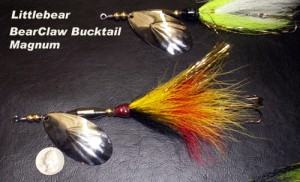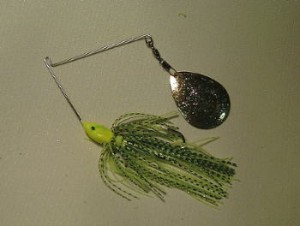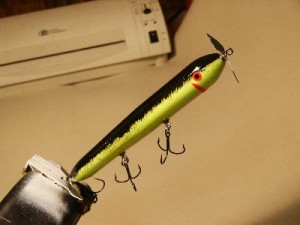By Chris Erwin
For the last 20 years or so, I have been spending a week on Cave Run Lake in the fall. This is a time when I try to do all the little things I think about all year long, but never have the time to test.
As some of you know, I build fishing rods and fishing lures through the winter. It’s the other side of being on the water. Many anglers never enter the world of building your own lures. To me, it’s the full circle of the fishing experience: to think up a lure, build it, and then catch fish with it. Fly-fishing has a large following of lure builders, tying their own flies and testing them in streams across the country.
I can assure you that they are many other anglers out there that enjoy building fishing lures and then putting them into action.
My trip in the fall gives me time to test new lures, make adjustments and refine the lures I make through the winter. I sell them in the spring each year, using the proceeds to support the Kentucky Angling News website and magazine.

This year I had two baits to make, test and make adjustments to, along with building some old favorites.
The first bait is a magnum blade inline spinnerbait. They are a seven and half inch bucktail spinner. Since I’ve been making some version of this bait for about 15 years, there was never any question as to whether it would catch fish. I was after making a bait that would start the blade rotation easy, that wouldn’t bend the clevis shut from the rigors of casting, and the wire would stay straight. I needed the bait to be long but not too heavy, and I wanted to balance the flash of the flashabou with the lift that comes from using bucktail hair.
This bait was responsible for the three musky caught this week and the one huge musky I lost on the main lake. I was casting the weed edges on the flats. In the river I was casting down timber on flats and creek heads.

The second bait was a drop spinnerbait. This is a long arm single spin spinnerbait with an extra-long shank hook. It’s designed to produce a lot of vibration and be able to drop and copter down. Many drop spinners use a short arm. They have their place, but this bait has a lot more vibration approaching cover and when dropped it still works flawlessly. It has proven to be a killer bait for both large and smallmouth bass.
We caught over 20 bass on this bait over the course of the week. When fish are feeding on shad, this is a bait that should be in your box.
The last bait I was testing is an old bait called a “LB Ripper.” This bait has been responsible for so many big fish that I have caught, I couldn’t even try to count them.

The thing is, each bait is made by hand and while I stick to proven dimensions, I test each one of them before they are painted to make sure I get the action just right. It’s a simple cigar bait with big props on both ends, when fish are feeding on the top this bait really shines.
I wanted to let you know the baits we used, and next week I’m going to go over the patterns and how they changed over the week. We boated over a hundred bass and three musky while we were on the water for a total of 12 days.
Next week, we will walk through how we used each bait and how we stayed on the fish patterns as it changed.



Be the first to comment